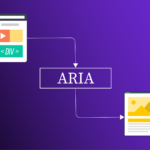Is your university prepared for the Department of Justice’s Title II digital accessibility mandate? With less than two years remaining until the first compliance deadline, universities nationwide are facing an unprecedented challenge.
At Documenta11y, we’re seeing an increasing number of universities urgently seeking assistance as they come to terms with the scale of this digital shift. This comprehensive guide will help you understand what’s at stake and how to efficiently achieve compliance before the deadlines.
Understanding Title II and its Impact on Educational Institutions
Title II of the ADA mandates that all public entities, including state and local governments, provide equal access to programs and services for individuals with disabilities. Initially, these requirements primarily covered physical locations, such as schools, libraries, and public buildings. However, with the DOJ’s recent update, Title II compliance now extends to digital resources, including websites, mobile applications, and other electronic content.
Scope of Title II: Who Needs to Comply?
Title II applies to state, local, and district government entities, including:
- Public schools
- Community colleges
- Public universities
- Public hospitals and public healthcare clinics
- State and local courts
- Public libraries
Why Does Title II Compliance Matter for Educational Entities?
Educational institutions serve diverse communities, including students with disabilities who rely on accessible digital content to access course materials, administrative resources, and educational tools. The DOJ’s adoption of the Web Content Accessibility Guidelines (WCAG) 2.1 Level AA as the compliance standard means that educational institutions are now required to ensure that their websites, digital documents, and learning management systems are accessible to users with disabilities. Compliance isn’t just a legal requirement; it’s a commitment to inclusivity and equal access to education.
The Consequences of Non-Compliance
Failure to comply with Title II requirements can result in severe consequences, including:
- Lawsuits and costly settlements
- Damage to the institution’s reputation
- Loss of federal funding
- Negative impact on student enrollment and retention
WCAG 2.1 Standards: Key Requirements for Higher Education and K-12 Institutions
The DOJ’s Title II update requires public-facing digital content to adhere to WCAG 2.1 Level AA standards, which cover a range of accessibility criteria for online materials. Here are some of the key elements schools need to consider:
Perceivable Content: Ensure that all digital content, such as images, videos, and infographics, includes alternative text, captions, or transcriptions. This allows students using screen readers or assistive technologies to fully engage with the content.
Operable Navigation: Websites and digital platforms should be navigable by keyboard alone to accommodate users who may not use a mouse. This includes clearly defined focus indicators and logical tab orders for smoother navigation.
Understandable Content: Content should be presented in a clear, straightforward manner, avoiding complex jargon whenever possible. Additionally, consistent navigation and layout across pages aid in user understanding.
Robust Compatibility: Digital resources must be compatible with a range of assistive technologies, from screen readers to magnification tools, ensuring that all students can access and interact with the content.
Exceptions to the Rule: What Educational Institutions Should Know
While the DOJ’s Title II web accessibility requirements are extensive, there are some important exceptions:
- Archived Content: Archived web pages and documents that are no longer actively used do not need to comply with WCAG 2.1 standards, provided they are not required for current services or programs.
- Preexisting Digital Documents: Documents created before the implementation of the new rule may be exempt, as long as they are not essential for current student or public engagement.
- Third-Party Content: Content from third-party sources, such as externally linked resources or social media, is exempt from compliance unless the school has a formal agreement with the third party.
For schools, it’s essential to identify content that falls under these exceptions, ensuring that active and current digital resources meet the required standards.
Ensuring Compliance: A Roadmap for Educational Institutions
For schools aiming to meet Title II requirements and foster an accessible digital environment, the following steps can provide a solid foundation:
1. Conduct a Comprehensive Accessibility Audit: Begin with an audit of all digital resources, including websites, course materials, and student portals.
2. Align with WCAG 2.1 Standards: Focus on meeting WCAG 2.1 Level AA guidelines, especially for frequently used content such as course materials, enrollment forms, and learning management systems. Prioritize elements like alternative text for images, clear navigation paths, and compatibility with assistive technologies.
3. Ensure Digital Document Accessibility: Beyond websites, schools must ensure that all documents, including PDFs, PowerPoints, and downloadable resources, are accessible. This involves adding appropriate tags, alt text, and formatting for screen readers.
4. Invest in Staff Training: Accessibility compliance requires ongoing maintenance. Training faculty, administrators, and IT staff on accessibility best practices will help ensure that all current and future digital content is compliant and inclusive. If you’re just beginning to make your content accessible, consider consulting digital accessibility experts to ensure a smooth and thorough implementation.
5. Prepare for Compliance Deadlines: Large public educational entities have until April 2026 to comply, while smaller institutions have until April 2027. Starting early will provide ample time to implement changes and prepare for potential updates.
Conclusion: Future-Proofing Your Institution’s Accessibility Strategy
The DOJ’s updates to Title II underscore the critical importance of digital accessibility in public education. As schools strive toward compliance, they simultaneously position themselves as leaders in inclusivity and innovation within education. By embracing accessibility today, institutions can better meet the diverse needs of students tomorrow.
For institutions seeking assistance in navigating these changes, platforms like Documenta11y offers services on making digital resources accessible while ensuring compliance with legal standards. Taking proactive measures now will not only fulfill current obligations but also pave the way for a more inclusive educational landscape for future generations. Act now to build a digital campus that serves every student effectively-because accessibility is not just an obligation; it’s an opportunity for growth and innovation in education.

 5 Key Things to Look for When Choosing a PDF Accessibility Partner
5 Key Things to Look for When Choosing a PDF Accessibility Partner How Semantic Structure and Regions Improve Digital Accessibility
How Semantic Structure and Regions Improve Digital Accessibility Less ARIA, More Accessibility: Documenta11y's Guide to Cleaner Web Content
Less ARIA, More Accessibility: Documenta11y's Guide to Cleaner Web Content

